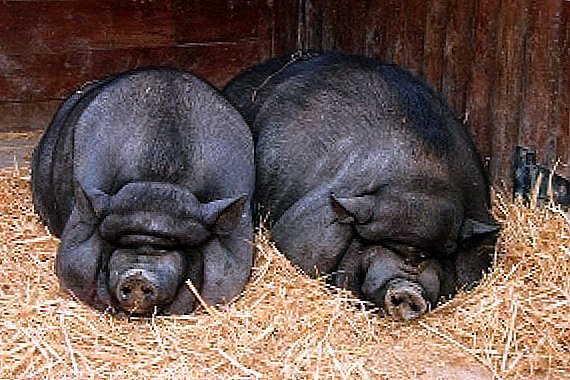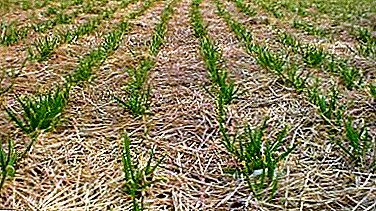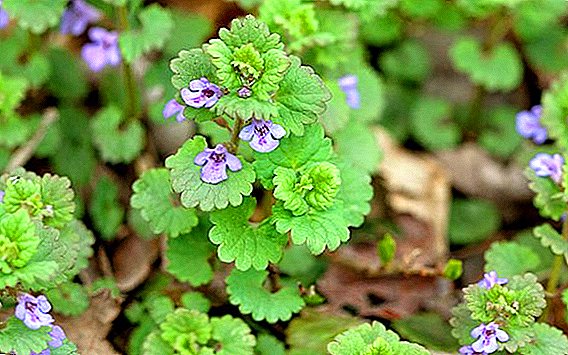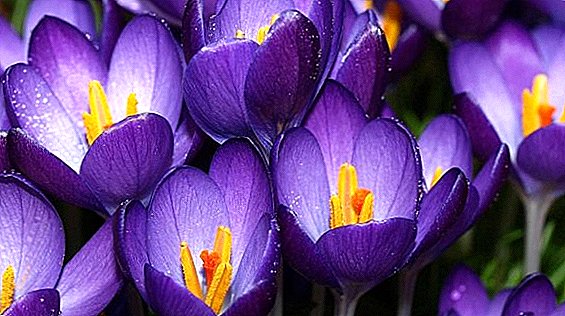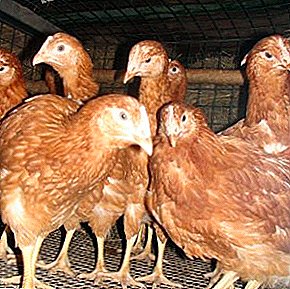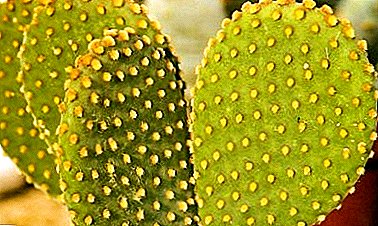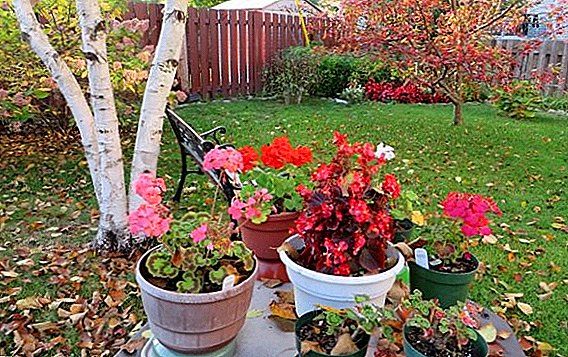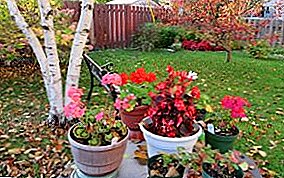 About the influence of the Moon on the biological processes taking place on Earth, mankind has long been known, and our ancestors, not fully understanding the root causes of this phenomenon, learned to use it to their advantage, including when conducting various kinds of agricultural work. Lunar calendars compiled for this purpose can be useful not only to the farmer or the summer resident, but also to the lover of indoor plants. This review contains detailed information about what a florist needs to know to plan her work in November 2019.
About the influence of the Moon on the biological processes taking place on Earth, mankind has long been known, and our ancestors, not fully understanding the root causes of this phenomenon, learned to use it to their advantage, including when conducting various kinds of agricultural work. Lunar calendars compiled for this purpose can be useful not only to the farmer or the summer resident, but also to the lover of indoor plants. This review contains detailed information about what a florist needs to know to plan her work in November 2019.
Favorable and unfavorable days for flower growers in November
First of all, it should be remembered that a favorable and unfavorable day according to the lunar calendar is a very relative category. Our natural satellite in different phases of its cycle can have an active effect on the aboveground or underground part of the plant, so one and the same day, for example, may be ideal for pruning and grafting and absolutely not suitable for planting bulbs or seeds.
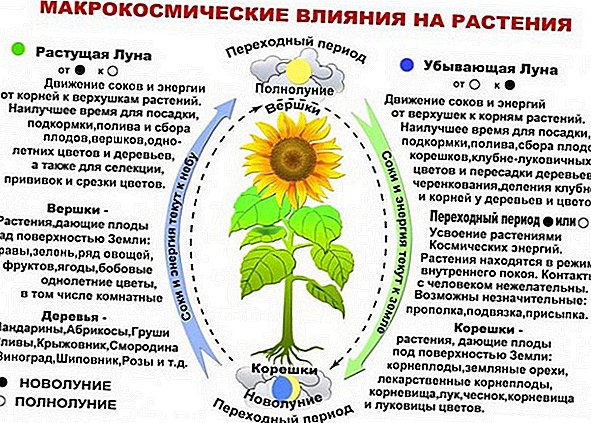
At the same time, there are also periods when the plants, in principle, should not be disturbed, the maximum that is allowed is to slightly loosen the soil in the pot so that it does not dry out.
Given these reservations, the lunar calendar of florist-friendly days in November 2019 might look like this:
| activity | Favorable dates of the month |
| Seed propagation (sowing) | 9, 10, 27, 28 |
| Propagation by bulbs, tubers (planting), rhizome division | 4, 5 |
| Pruning, harvesting cuttings | 3, 9, 14, 20, 26, 27, 28 |
| Transfer | 1, 2, 4, 5, 17, 23, 25, 30 |
| Top dressing | 4, 6, 7, 13, 14, 15, 16, 17, 18, 19, 20, 22, 24, 25, 30 |
| Intensive watering | 4, 6, 7, 8, 16, 17, 22, 24, 25, 30 |
| Loosening | 11, 13, 21, 29 |
| Fight against diseases and pests (treatment with insecticides, acaricides, fungicides) | 28 |
As for unfavorable days, their list also depends on the specific type of work.
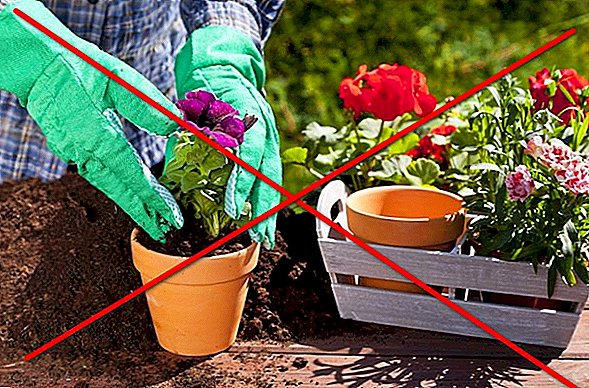
In particular, the grower is worth noting for yourself such "stop dates":
| Procedure | Adverse day of the month |
| Transfer | 17, 19, 29 |
| Pruning, grafting | 15, 16 |
| Watering | 13, 14, 22 |
| Landing | 23, 26 |
The influence of moon phases on home plants
For those who do not want to memorize a large number of different numbers (especially since there is sometimes very contradictory information in different sources), it will be useful once and for all to figure out what kind of influence on indoor plants the satellite of the Earth has in its various phases.
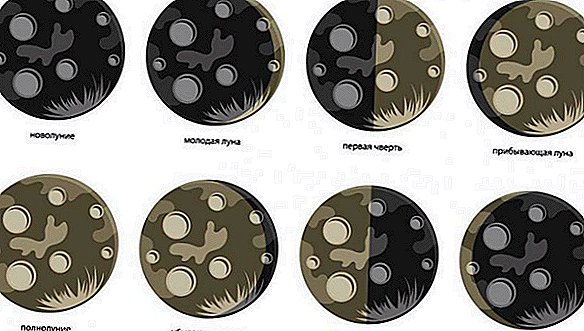
In this case, knowing the current position of the moon, you can always independently make a competent decision about which works can be planned and which are better to be transferred. In November 2019, the Moon will move like this:
First half of the month:
| Calendar dates | Phase of the moon | Zodiac sign |
| 1-3 | Growing | Capricorn |
| 4 | First quarter | Aquarius |
| 5 | Growing | Aquarius |
| 6-8 | Growing | Fish |
| 9-10 | Growing | Aries |
| 11 | Growing | Taurus |
| 12 | Full moon | Taurus |
| 13-15 | Decreasing | Twins |
Did you know? Many people mistakenly believe that the duration of the lunar month is 28 days. In fact, the full cycle of the moon takes 29 or 30 days, depending on how close it is to the horizon at the new moon; in general, it is customary to equate the lunar month to 29.5306 days.
The second half of the month:
| Calendar dates | Phase of the moon | Zodiac sign |
| 16-17 | Decreasing | Crayfish |
| 18-19 | Decreasing | a lion |
| 20 | Third quarter | Virgo |
| 21 | Decreasing | Virgo |
| 22-23 | Decreasing | Libra |
| 24-25 | Decreasing | Scorpio |
| 26 | New moon | Sagittarius |
| 27-28 | Growing | Sagittarius |
| 29-30 | Growing | Capricorn |
Signs of the zodiac in the compilation of sowing calendars are not random. The fact is that regardless of whether the current phase of the moon is favorable or unfavorable for any kind of agrotechnical work, there are signs of the zodiac that are considered absolutely "dead."
On such days, any activities carried out with houseplants will only harm them, and the seeds, bulbs or tubers planted at this time will either not sprout at all, or will give weak and painful shoots. Conversely, there are signs that promote such work.

In this regard, the gardener should remember the following simple rules:
- If possible, you should not plan for responsible procedures with flowers, including planting, transplanting and pruning, while the Moon is in Leo, Virgo, Gemini, Aquarius, Aries, and Sagittarius. These signs are considered infertile. In November 2019, as can be seen from the above information, we are talking about periods from 4 to 5, from 9 to 10, from 13 to 15, from 18 to 21 and from 26 to 28 numbers.
- Transplantation and budding houseplants will transfer better if you do this when the Moon is in Cancer (for November 2019 it is the 16th or 17th). Landing during this period is also allowed.
- For sowing seeds, including their pre-soaking, as well as picking (thinning) seedlings and pruning of adult plants, Scorpio is very well suited (November 24 or 25).
- Bulbs, tuberous plants, as well as any other indoor plants that have a strong and well-developed root system (for example, palm trees), are better to plant and replant when the Moon has entered the Pisces sign. This is, respectively, 6, 7 or 8 November.
- The work with dieffenbachia, ficus, monster and other indoor plants with large and decorative leaves will be properly planned for the days when the Moon is in Libra or Taurus (November 11-12 or November 22-23). For other indoor flowers these days are considered neutral, that is, it is quite acceptable to care for a flower garden.
- Capricorn is a sign that does not have a bright negative or very positive impact on indoor plants, so from 1 to 3 November, the grower can act without regard for the Zodiac.
Did you know? Almost 100 years before the discovery of Newton's law of universal perception of the world (approximately 1666), astronomer Johann Kepler first suggested that it was the force of gravity of the moon that caused the tides and ebbs.
Having dealt with the signs of the zodiac, you can return to the moon and its main phases.
Rising moon
The period of the rising moon is the time between the new moon and the full moon. It is very simple to realize and remember how this phase affects the plants: the moon grows, the water rises. During the growing month, tides occur - respectively, the moisture in the plants, and with it all the nutrients, begin an active movement from the roots to the leaves, stems and flowers.
Thus, the energy vector in the period under consideration is directed upwards. This phase is characterized by enhanced growth and the most active sap flow. Flowering houseplants can start planting buds; new sprouts and shoots appear in deciduous trees.
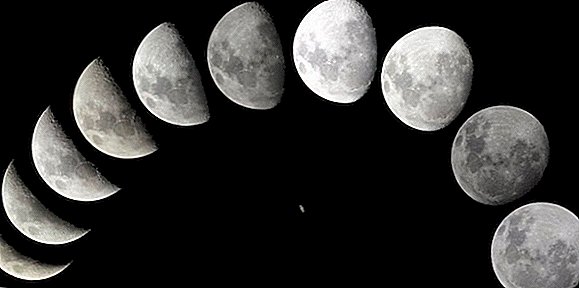 This growing moon period is considered ideal for transplanting, since the risk of root damage is minimal.
This growing moon period is considered ideal for transplanting, since the risk of root damage is minimal.
Based on this information, it is easy to understand that in the period between the new moon and the full moon can and should:
- rooting cuttings;
- plant seeds, especially fast growing plants;
- repotting and planting flowers (unless, of course, they started blooming);
- carry out budding;
- to propagate plants by air layouts;
- carry out foliar fertilizing (spraying method).
On the other hand, for trimming, the growing Moon is an extremely unfavorable period, since the intensive movement of sap in the aerial part during this period will cause the plant to “cry”, and this phenomenon, in turn, dramatically increases the development of fungal, bacterial and other infections, and pests affect juicing specimens much more active.
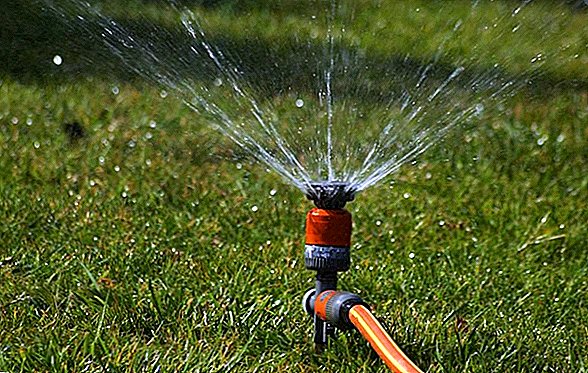 Abundant watering, including sprinkling, is another requirement for a florist at a time when the moon increases.
Abundant watering, including sprinkling, is another requirement for a florist at a time when the moon increases.
Descending moon
As you can easily guess, immediately after the full moon, the reverse processes begin: water decreases, ebb tides occur on Earth, and the life force of plants rushes from the top down to the roots. Externally, indoor flowers during this period seem to fall asleep, but in reality they are simply moving into a phase of active growth of the root system.
Important! Professional florists are well aware that the flowers, cut in the descending month phase, retain their freshness in a vase for much longer.
On the waning moon, respectively, can and should:
- pruning (just do it better in the initial phase, while the flower still has enough vitality, because closer to the new moon it will be much harder for him to undergo "surgery");
- collect and harvest planting material for the future reproduction of tuber or bulbous plants (this type of work, on the contrary, it is useful to shift as much as possible to a new moon, then the maximum amount of vital energy will be concentrated in tubers and bulbs);
- to propagate flowers by dividing the bush, rhizome or root layering;
- plant tubers and bulbs;
- to root feed.
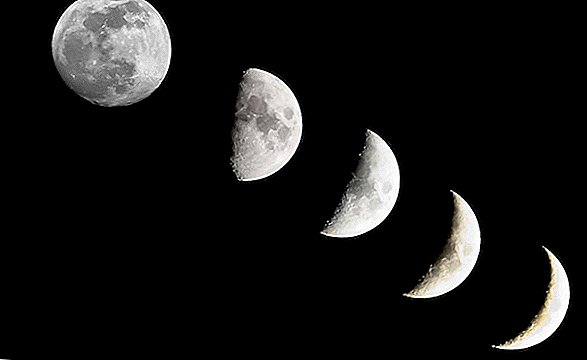
New moon
A new moon is precisely the moment when all plants are in a state of maximum rest and are not at all ready for any changes. The maximum that can be done on this day is to trim. In this case, all potential energy that has accumulated in the flower to get its push in the next few days, will be directly aimed at the formation of new shoots (for most representatives of the flora, pruning is a powerful stimulus for active growth).
The rest of the new moon grower better to relax, as well as his wards. Everything that will be planted on this day, risks not to ascend, but everything that is transplanted - to recover for a very long time.
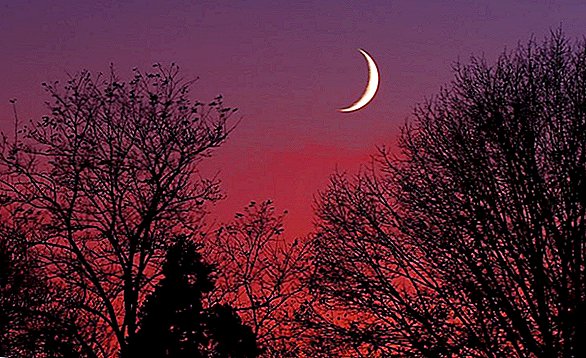
Full moon
If the new moon turns the plant world into a real sleepy kingdom, then the full moon for flowers is a real celebration, the peak of life activity and the bloom of energy.
However, this does not mean that the “green wards” will gratefully respond to transplantation, pruning and other such stresses on this day.
Did you know? Traditional healers, shamans and healers always collect medicinal herbs in the full moon. The point here is not in the mystical meaning of this night, but in the fact that in this phase of the monthly cycle, the maximum amount of useful substances is concentrated in the healing raw materials.
In fact, in the full moon, the day before or the day after it, the florist should concentrate on:
- collecting seeds for future planting;
- application of organic and mineral fertilizers - both root and foliar method;
- carrying out watering (top or bottom);
- loosening the soil or updating its upper layer;
- hilling (if such a procedure is recommended for this type).
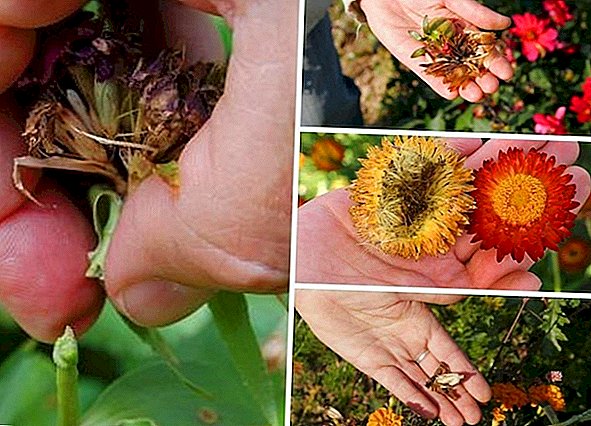
How to transplant indoor plants on the lunar calendar
Not all phases of the lunar calendar are suitable for transplanting; however, a grower should be aware that there are general rules and principles for carrying out this type of work, which are much more important to follow than follow the movement of the heavenly bodies.
However, there are situations when an emergency transplant is still necessary. First of all, it concerns the development of various root infections, when without sanitary treatment of the roots and completely replacing the substrate the plant cannot be saved. Do not wait for the arrival of spring, it makes sense also in cases where the flower becomes so crowded in the same pot that it becomes difficult to water it because of the roots protruding from the ground, or if the pot has cracked or broken.
Important! November as a whole is far from the best month for transplanting indoor plants, given that during this period, in response to a decrease in daylight hours, they enter a resting phase.
There are plants for which the optimal time for transplantation is precisely the period preceding retirement. This category, for example, includes all conifers. It is better to transplant flowering plants immediately after the flowering phase has ended - accordingly, this moment may coincide with any season.
Finally, if, before moving the plant into the winter dormancy phase, its rejuvenating pruning was carried out, the cuttings obtained during this procedure can be rooted immediately. To this, it should be added that some flower growers are staunch supporters of the autumn transplant, considering that the "half-asleep" flower tolerates stress much more easily.
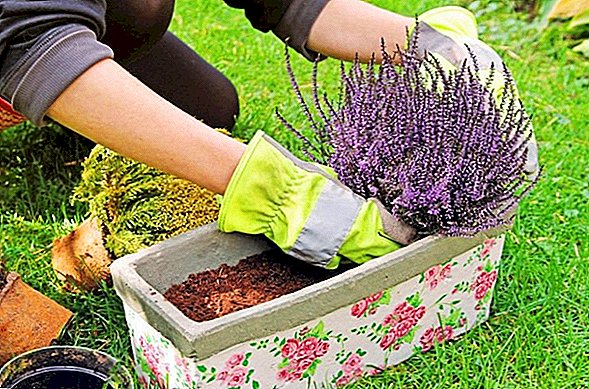
So, deciding to transplant a houseplant in November and, after consulting the lunar calendar, you should additionally clarify a few important points, the main of which, perhaps, is the right choice of the right moment.
The frequency with which it is necessary to transplant depends on both the age of the flower and its variety and growth rate: as a general rule, young flowers are transplanted every year, and adult specimens - every 2-3 years (trees - every 4-5 years), changing the top layer of the earth to a fresh and fertile one in a pot.
Did you know? One of the most expensive spices in the world is saffron: for only 10 g of this spice you need to pay at least $ 50. However, many will be surprised to learn that they receive this culinary jewel from crocus flowers, with which we very often decorate our window sills with the advent of March.
The classic signs that a houseplant needs an emergency transplant are:
- root germination through the drainage holes of the pot or their appearance on the surface of the substrate;
- stunting;
- loss of color saturation of leaves, their wilting, yellowing or dropping;
- lack of flowering (as one of the possible causes);
- loss of stability of the potted plant (due to the small size of the pot, which does not correspond to the size of the above-ground part, the flower starts to tip over under its own weight);
- the appearance of a continuous salt layer on the soil surface (indicating depletion of the substrate and the need for its addition with fresh earth);
- the rapid release of water through drainage holes after watering (usually occurs in cases where the roots have filled the entire volume of the pot and displaced from it the bulk of the earth);
- flower damage by disease or pests, if other measures of treatment fail.

In order for the plant to transfer the stress from transplantation easier, the florist needs to follow these rules:
- You should never replant a flower in a large pot. This is one of the most common mistakes, dictated by the initially incorrect idea that in this way the plant can be saved from too frequent transplants. In fact, in a large pot, flowers “settle down” for a very long time. Ideally, the difference between the old and the new capacity in diameter should not exceed 2-3 cm.
- Choosing a pot, you can give preference to any material (clay, plastic, glass); much more important to correctly determine the shape of the tank. Plants with a strong root system (for example, palm trees) need high pots, while, for example, a wide and shallow pot will suit better for bulbous ones.
- In all cases, except for emergency (broken pot, root rot, etc.), transshipment is the best way to transplant. To hold it, a drainage layer is laid in a new pot, a small amount of previously prepared soil is poured over it, after which the flower is carefully removed from the old pot together with the earthy clod, installed in a new container and filled with the required amount of soil on the sides.
- If the transplant is carried out in a pot that has already been used before, it must first be washed with soap and sanitized, for example, using hydrogen peroxide, alcohol or a weak solution of potassium permanganate.
- Each houseplant imposes its own requirements on the soil, therefore, it is necessary to select a substrate taking into account such features. It is better to buy the soil mix in specialized stores, where it is not just properly formulated, but also underwent a preliminary disinfection.
- When filling the pot with earth, it is necessary to leave free space up to the upper edge of the pot (2-3 cm) so that it is convenient to water the flower.
- After transplantation, the flower can be watered, but in the next few weeks it should in no case be fed with fertilizer.
- During flowering plants are not transplanted.
Learn more about how to properly transplant indoor plants.So, the lunar calendar is not a dogma, but a guide to action. The moon, of course, has a certain impact on any plants, including indoor plants, but the scale of this impact should not be overestimated. How well the flowers on the windowsill feel will first of all depend on ensuring the appropriate mode of lighting, watering, temperature, and also on the love that the owner gives to his “pets”.



